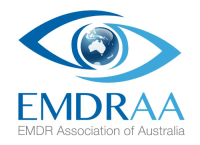Frequently Asked Questions
Eye Movement Desensitisation and Reprocessing (EMDR) is a powerful psychological treatment that has been used effectively for over 30 years in a variety of international settings and cultures with many different types of psychological distress.
EMDRAA exists to ensure and maintain high standards of practice in EMDR Therapy. In this we are primarily concerned with the safety and efficacy of EMDR therapy being undertaken with clients. There are many books on EMDR and training programmes available for therapists who have an interest in EMDR, but it is a complex therapy requiring a high level of skill and the learning of detailed knowledge and specific techniques in a systematic way. Only those training programmes that fulfil strict criteria from international guidelines are approved by EMDRAA.
If you are considering EMDR therapy, please ask your therapist if they have received EMDRAA approved training and are members of EMDRAA. In this way, you can be sure that your therapist has been trained in EMDR according to international guidelines.
In her book “Eye Movement Desensitisation and Reprocessing (EMDR) Therapy. Basic principles, Procedures and Protocols. Third Edition” (2018), the originator of EMDR, Francine Shapiro, states:
“EMDR therapy training is best obtained through programs certified by the regional EMDR association in your area. The internationally standardized trainings consist of lecture, consultation, and supervised small-group practice.” (p 504)
Scientific research has established EMDR as effective for post traumatic stress disorder (PTSD). Clinicians have also successfully used EMDR as a treatment component in the management of:
- Depression
- Anxiety
- Panic attacks
- Personality disorders
- Complicated grief
- Dissociative disorders
- Pain disorders
- Body dysmorphic disorders
- Eating disorders
- Sexual or Physical abuse
- Performance anxiety
- Stress reduction
- Disturbing memories
- Phobias
In 1987, psychologist Dr Francine Shapiro made the chance observation that eye movements can reduce the intensity of disturbing thoughts, under certains conditions. Dr Shapiro studied this effect scientifically, and in 1989 reported success using EMDR to treat victims of trauma. Following this initial discovery many treatment studies were conducted, and there are now more published treatment outcome studies on EMDR than any other treatment for Post Traumatic Stress Disorder.
These days, EMDR integrates elements of many effective psychotherapies to maximise treatment effects. These include:
- Psychodynamic
- Cognitive behavioural
- Interpersonal
- Experiential, and
- Body Centred Therapies
EMDR is an information processing therapeutic technique that incorporates an eight phase approach:
- Phase 1, 2, 3: Client History, Treatment Planning, Preparation and Assessment
- Phase 4, 5: Desensitisation and Installation
- Phase 6, 7: Body Scan and Closure
- Phase 8: Re-evaluation
Often disturbing events happen in our lives that stay with us. The brain cannot process information as it ordinarily does. One moment can become ‘frozen in time’ and remembering the trauma may feel as bad as going through it for the first time. This is because the images, sounds, smells and feelings still seem to be there – they haven’t changed. Such memories have a lasting negative effect that interferes with the way a person sees the world and the way that they relate to other people.
EMDR has a positive effect on how the brain processes information. Following an EMDR session, the person no longer relives the trauma. They still recall that an incident happened, but it no longer feels upsetting.
One or more sessions are required for the therapist to understand the nature of the problem and to decide whether EMDR is an appropriate treatment. The therapist will also discuss EMDR with you more fully and give you an opportunity to ask questions. The typical EMDR session lasts from 60-90 minutes. The type of problem, life circumstances and the amount of previous trauma will determine how many treatment sessions are necessary.
EMDR is one of the most researched psychotherapeutic approaches for PTSD. Since 1989 over 20 controlled clinical studies have found EMDR to effectively decrease or eliminate the symptoms of PTSD for the majority of clients and it is more efficient.
The Australian Psychological Society (APS) has recently noted EMDR as a Level 1 treatment for PTSD in their recent published results for ‘Evidence-Based Psychological Interventions: A Literature Review’ (2010) for both young people and adults. This is the highest rating that can be applied to a specific therapeutic approach. Additional research has focussed on use of EMDR for Depression and Anxiety and numerous other issues with extremely good results.
- World Health Organisation – 2013
- The International Society for Traumatic Stress Studies – 2009
- National Health and Medical Research Council – 2007
- American Psychiatric Association – 2004
- US Department of Veterans Affairs and Department of Defense – 2004
- Northern Ireland Department of Health – 2003
- Dutch Guidelines of Mental Health Care – 2003
- Israel National Council for Mental Health – 2002
- Clinical Division of the American Psychological Association – 1998
- Phoenix Australia – Centre for Posttraumatic Mental Health
During EMDR, the therapist works with the client to identify a specific problem as a focus for the treatment session. The client then calls to mind the disturbing issue or event, what was seen, felt, heard, thought, etc. The therapist will then begin eye movements or other bilateral stimulation. These eye movements are used until the memory becomes less disturbing and is associated with a positive thought and belief about yourself.
- Treatment is focussed on the symptoms and conducted in session
- EMDR has comparable results to that of other trauma treatments such as exposure therapy, but over a much shorter timeframe
- Studies have shown that 77-90% of clients with PTSD were able to eliminate their symptoms after 3-7 sessions of EMDR (without homework)
- Better tolerated by clients than exposure therapy
- Clients do not have to talk in detail about their trauma
